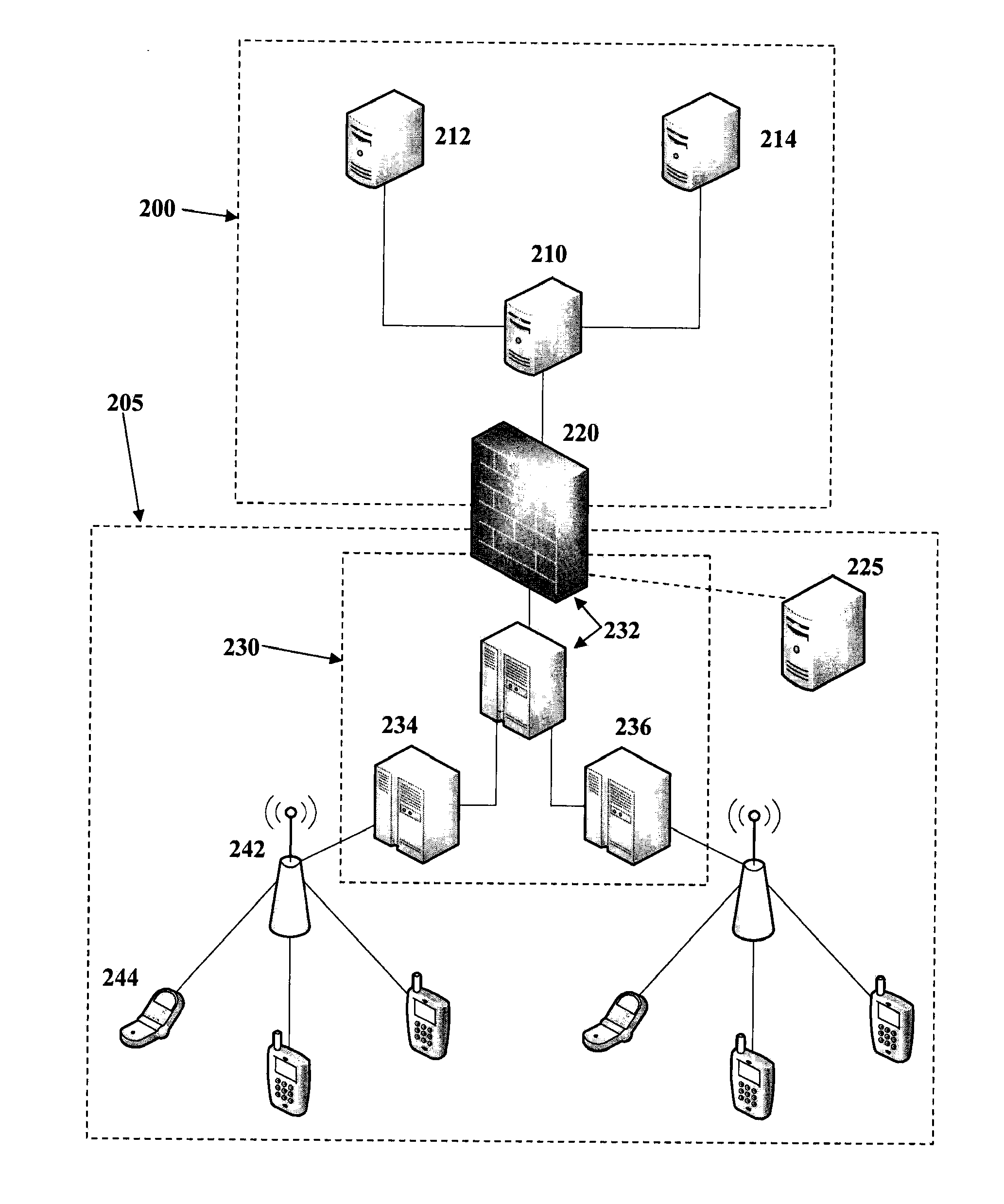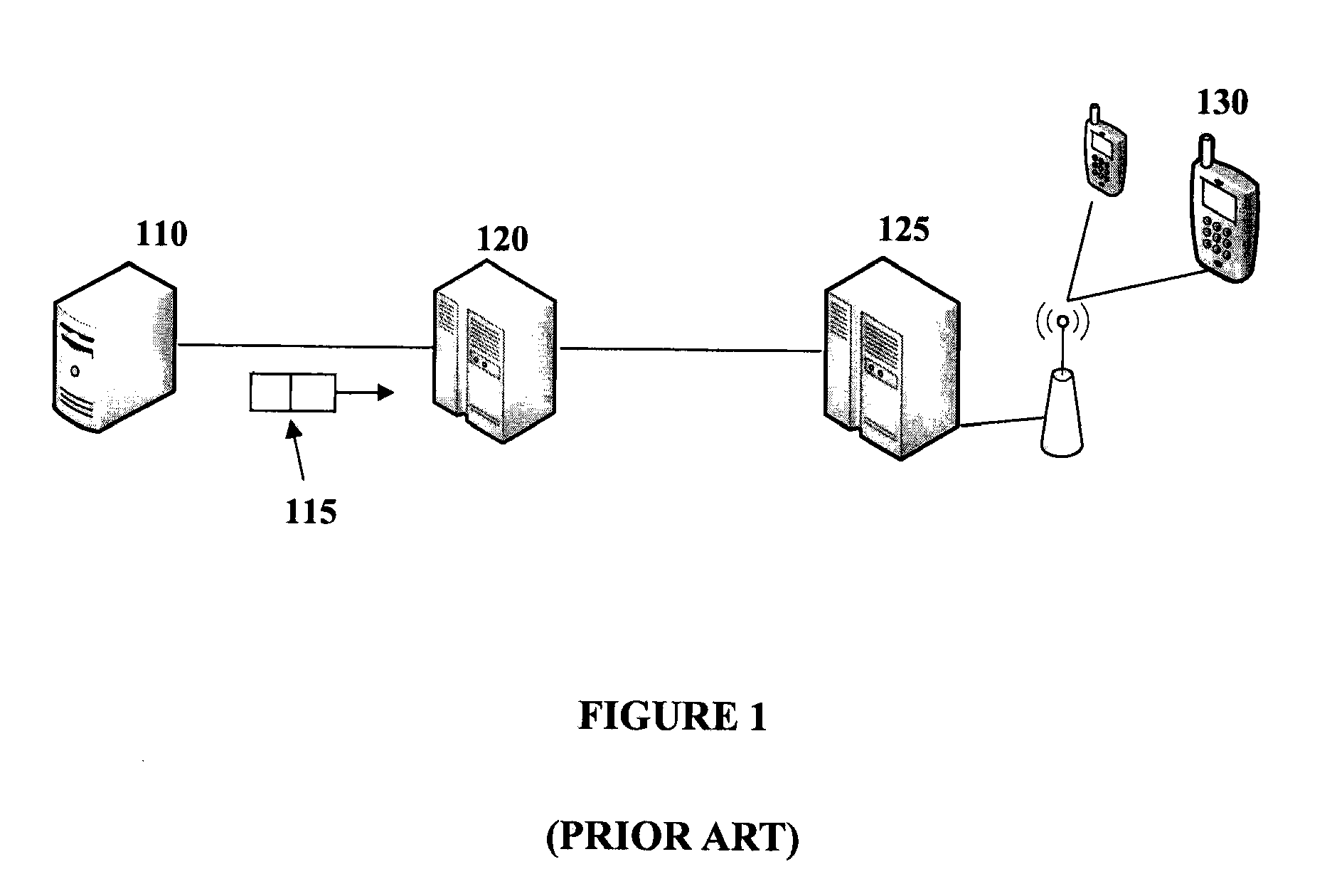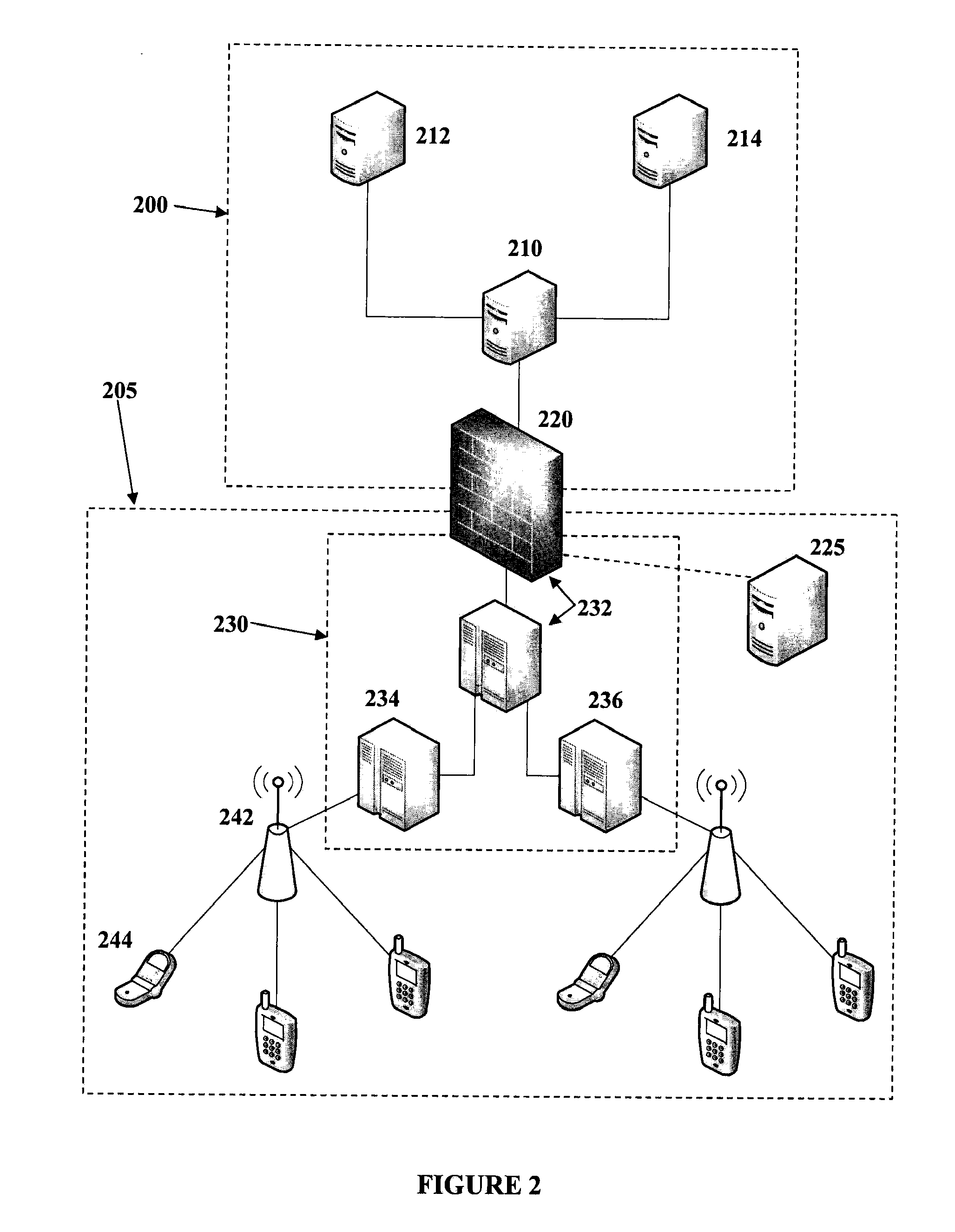Method and apparatus for facilitating push communication across a network boundary
a network boundary and push communication technology, applied in the field of communication networks, can solve problems such as inability to support push communication
- Summary
- Abstract
- Description
- Claims
- Application Information
AI Technical Summary
Benefits of technology
Problems solved by technology
Method used
Image
Examples
example 1
[0093]FIG. 3 illustrates a portion of a public network communicatively coupled to a portion of a private network via a GPRS core network in accordance with an embodiment of the present invention via micro-port forwarding. The public network comprises a server 305 having pending push data for a target mobile device or machine type communication (MTC) user equipment (UE) 340 of the private network. The GPRS core network comprises a GGSN 310, which includes a NAT 312 and a DHCP server 314.
[0094]The DHCP server 314 is configured to assign private IP addresses to devices in the private network, such as UE 340, in response to a PDP context activation request. Private IP addresses may be leased for a predetermined period of time and retained at least in a memory module of the DHCP server. The IP address lease for a device may be renewable by performing a subsequent PDP context activation associated with the same device within a predetermined time period, for example minutes, hours, days, o...
example 2
[0098]FIG. 4 illustrates a portion of a public network communicatively coupled to a portion of a private network via a GPRS core network in accordance with an embodiment of the present invention, incorporating a representative device 450 of the private network. The public network comprises a server 405 having pending push data for a target mobile device user equipment (UE) 440 of the private network. The GPRS core network comprises a GGSN 410, which includes a NAT 412 and a DHCP server 414.
[0099]The DHCP server 414 and the NAT 412 may function similarly to those described with respect to FIG. 3. However, the NAT 412 need not be configured to implement micro-port forwarding.
[0100]The representative device 450 is configured to periodically communicate with the server 405. The representative device 450 may be incorporated into or operatively coupled to the GGSN 410, either directly or via an SGSN such as SGSN 430. The representative device may utilize an active PDP context, DFR, IP add...
example 3
[0103]FIG. 5 illustrates a sequence diagram for performing an initial PDP context activation and optional server registration in accordance with embodiments of the present invention, for example associated with the networks illustrated in FIGS. 2, 3 and 4. An initial PDP context activation may be required before push communications can be provided to a mobile device, even if the PDP context is immediately deactivated after initial activation. It is assumed that a GPRS attach operation has already been performed by the mobile device, as would be readily understood by a worker skilled in the art. As illustrated in FIG. 5, the mobile device 505 transmits an Activate PDP context message 540 to an associated SGSN 510. The message 540 may comprise an identifier of the mobile device 505, such as an access point name (APN) or the like. The SGSN 510 may perform a DNS query (not shown) to determine an appropriate GGSN 515 corresponding to the mobile device. The SGSN then transmits a create PD...
PUM
 Login to View More
Login to View More Abstract
Description
Claims
Application Information
 Login to View More
Login to View More - R&D
- Intellectual Property
- Life Sciences
- Materials
- Tech Scout
- Unparalleled Data Quality
- Higher Quality Content
- 60% Fewer Hallucinations
Browse by: Latest US Patents, China's latest patents, Technical Efficacy Thesaurus, Application Domain, Technology Topic, Popular Technical Reports.
© 2025 PatSnap. All rights reserved.Legal|Privacy policy|Modern Slavery Act Transparency Statement|Sitemap|About US| Contact US: help@patsnap.com



